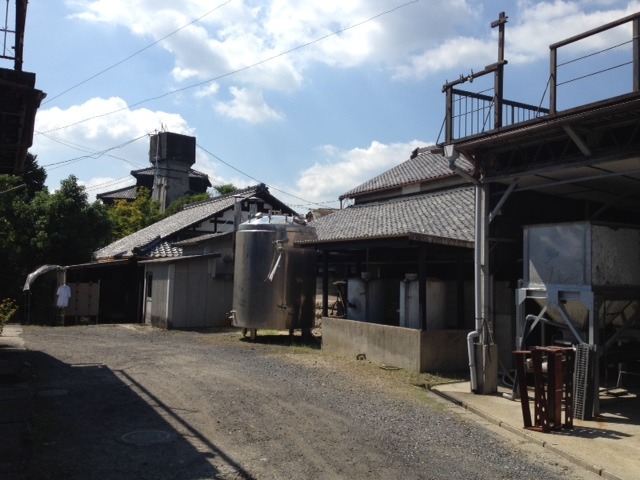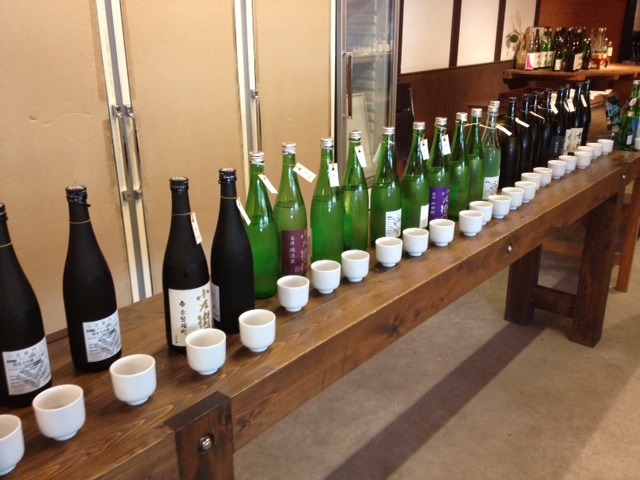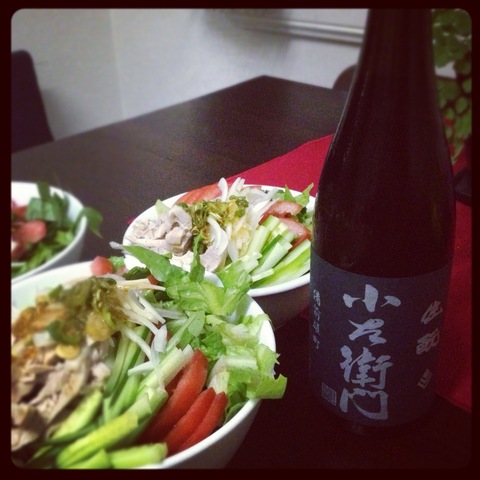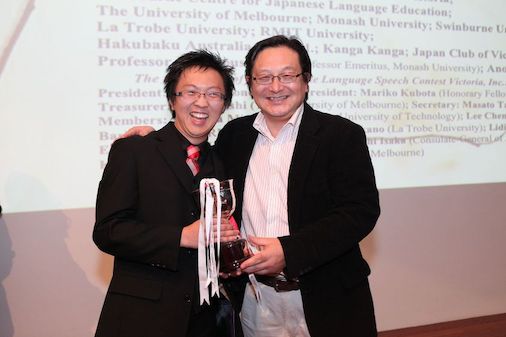Kozaemon Brewery
I really like Gifu. There’s something comforting, protective, about the way the steep hills envelop the verdant valleys. The way the rivers meander through the middle of all the little towns and villages.
This prefecture is one of the most picturesque parts of Japan I’ve been to, and I highly recommend a visit if you have the chance. It lies to the West of Tokyo, in the mountain range that divides the island of Honshu. The reason I’m back in Gifu because I’m going to check out the Kozaemon Brewery.

I’m collected from the station by Nobu-san. We stop at a cute little restaurant, and it’s a serious relief to be out of the heat and humidity. Over a delicious meal he explains some of the history of the brewery; how Kozaemon Brewery, until recently known as the Nakashima Brewery, is in its fourteenth generation and has been making sake for 310 years.
The location itself is spectacular, framed by jagged mountains in the background, on the banks of one of those snow-fed rivers that I mentioned before. Kozaemon makes some product specifically for Sake Restaurant, a sign of the closeness of our relationship, and it really is awesome to be here.

Kozaemon-san himself is in the office, surrounded by more mountains, this time of paperwork. He lets me know he’s waiting for the head brewer to give me a tour, but then Nobu-san is back, so over the next while he shows me around. He explains some of the technical things, pointing out and clarifying some of the more unusual equipment as we pass.
One thing of note is how Kozaemon Brewery soaks their rice before steaming. There are many approaches across different producers, and here very precise calculations based on the strain and polish of the rice are used. And when I say precise, I mean to the second hand of a stop-watch precise.
Next is the koji room, where rice with mould is propagated, and I learn how important it is to control the humidity. Obviously mould loves a moist and warm environment, but it’s not about what the koji wants; it’s what the brewer wants from the koji. More humidity will produce a sake with higher acid content, while koji created in a low acidity environment will tend to be fruitier in both taste and aroma. This is another aspect of production that needs to be continuously checked and controlled, and another reason why brewers get very little sleep over the brewing period.
We stop beside some very large fermentation tanks, probably the largest that I’ve seen on this trip, and Nobu-san explains that these tanks are used for the honjouzo yamahai sake. It is actually harder to create sake with Umami in smaller vessels, because the amino acids have more difficulty forming. Each honjouzo batch takes about 24-28 days, while the junmai takes as long as 40 days for a daiginjo.
Shortly after Nobu-san shows me their patented jikagumi machine, which bottles newly pressed sake without allowing air contact. This process, unique to Kozaemon Brewery, captures some of the naturally occurring carbon dioxide produced in fermentation, leaving the sake lightly sparkling and very refreshing. They only sell to a very select group of restaurants around the world, and I’m glad to say that because of our relationship, Sake Restaurant is one of those restaurants.
It’s during this interaction that I’m surprised to learn there are only three people actually making sake at the brewery. I’m quite shocked, because in my head I’d figured there were as many as thirty. I also learn, after nearly two hours chatting about sake production, that the gentleman who humbly introduced himself to me at the train station merely as ‘Kozaemon’s brother’ is actually the head brewer!
After it’s on to a tasting. You can see by the photo that my job is pretty difficult some times…
I really enjoyed the chance to taste some sakes that my restaurant currently doesn’t stock. I think my favourite had to be the Kimoto junmai. The nose was all vanilla and black chocolate, with a chalky palate that was umami and soy. I can’t wait to try it with some food!

This is the last brewery I’ll visit on this trip, and I can’t help thinking about how down to earth and hard working these guys are, from Amabuki to Yuho to Kozaemon. Between these three breweries lie a diversity that encompasses the nicest sakes I’ve ever tasted, yet there is no hint of arrogance. And the thing that keeps coming through is how difficult and taxing this job is.
It’s not about the money, and it surely isn’t about the cosy work conditions. The average working day starts before sunrise and finishes close to midnight, seven days a week with maybe one or two days off in six months.
What other industry does that?
These brewers are artisans. It’s a labour of love. It’s pride without the arrogance. I believe that the weight of culture pulls them in, and there is a sense of obligation derived from this aspect. Pressure from, in the case of Amabuki and Kozaemon, literally hundreds of years of family history and tradition. But this is not the reason they stay. Every brewer said it was difficult, that the life was tough, ‘taihen’. Yet I never got the impression that any one of the people I spoke to was likely to leave the life of sake brewing now that they’re in.
And then there are the people that have joined the breweries recently, the next generation were family isn’t a factor. What could possibly motivate someone to think of brewing sake as a career?
It must be the idea of being part of that tradition. Of creating something. Something special and unique. Something in its moment, whether it’s a food match or a glass to toast with, perfect. I believe it’s the sense of solidarity, knowing that they can rely on those around them. That everybody it there for the same reason, and that reason is to make the best sake humanly possible.
Maybe I’m over analysing or perhaps being overly romantic. I guess I’ll know more when I come back in February to visit all the breweries in full production.
I hope I can handle the early starts!
………………………………………………………………………………………………………………………………………………………………………
 |
Wayne Shennen According to Wayne Shennen, good bartending is all about balancing flavours. “The subtlety of each ingredient should shine through,” explains the passionate New Zealander, a trained sake sommelier and one of Sydney’s most respected bartenders at award-winning Saké Restaurant & Bar. “If you can taste what you’re drinking, you tend to treat alcohol with more respect.”a |
Saké Restaurant & Bar
12 Argyle Street
The Rocks, Sydney
t. 02 9259 5656
The Sake Alchemist #4
The Sake Alchemist #3
The Sake Alchemist #2
The Sake Alchemist #1
Tasting Business at Saké Restaurant & Bar




